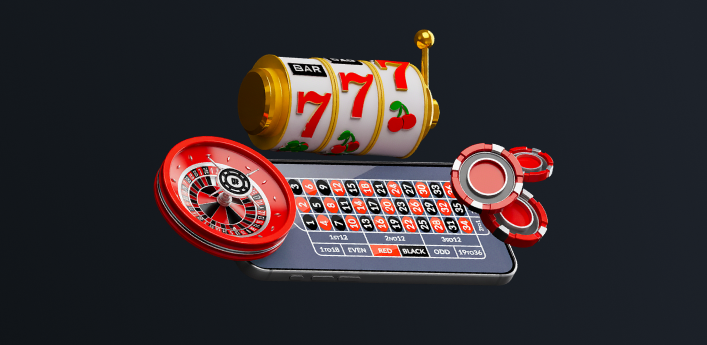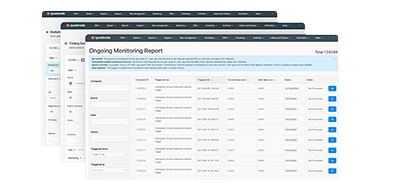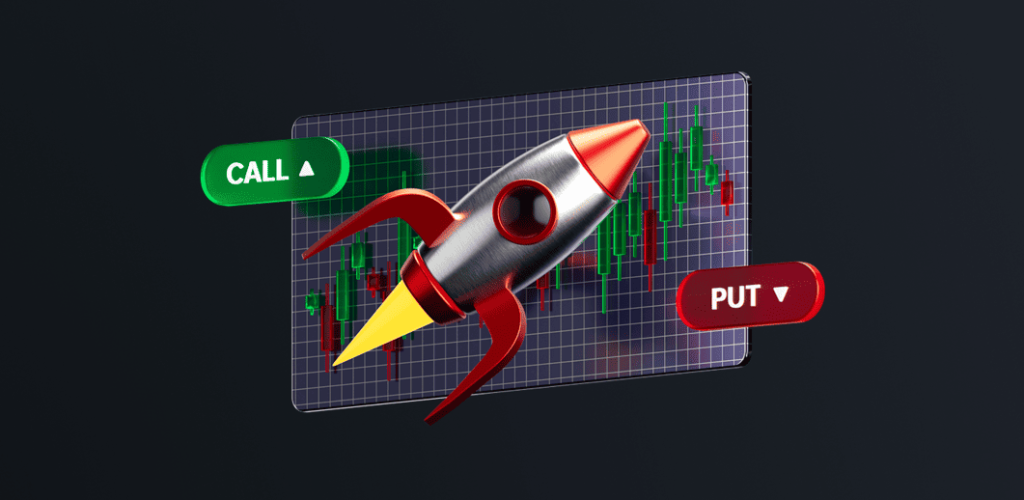Back
Contents
Wyckoff Distribution: Understanding Market Tops and Trend Reversals

Vitaly Makarenko
Chief Commercial Officer

Demetris Makrides
Senior Business Development Manager
Wyckoff Distribution is a phase where institutional traders offload their positions after a strong uptrend, transferring assets to uninformed retail traders. During this phase, the market may appear strong and bullish, but price action shows early signs of weakness as supply starts to outweigh demand.
Traders who recognize this phase can take advantage of potential shorting opportunities before the market enters a markdown phase.
This article will examine the operational components of Wyckoff Distribution as well as its essential stages and trading approaches backed by practical examples for trader decision-making support.
What is the Wyckoff Method?
Among all technical analysis strategies, the Wyckoff Method stands out as the widely utilized approach in financial markets. Richard D. Wyckoff developed a strategy that provides traders and investors with fundamental insights about market price forces generated by supply and demand.
Wyckoff Distribution stands as a vital Wyckoff Method principle that fails an uptrend and announces bearish changes. The Wyckoff Distribution phase marks the point where smart money institutions start selling their assets as retail traders maintain their buying activities leading to market reversal.
Understanding the Wyckoff Market Cycle
Just before learning about Wyckoff Distribution, all readers must grasp the Wyckoff Market Cycle which demonstrates how markets transition among accumulation phases and uptrends and distribution phases and downtrends. Analyzing institutional activity enables traders to spot major price shifts after completing this cyclical pattern.
Accumulation
This is the phase where smart money (large institutions and professional traders) accumulate assets at relatively low prices. The market typically moves sideways, forming a trading range, as institutions gradually buy without significantly driving up the price. Retail traders often overlook this phase because the market appears stagnant. However, signs such as higher lows, volume spikes on upward moves, and shakeouts indicate accumulation.
Markup
The price trend starts to go upward when institutions reach their target quantity of positions. When an uptrend occurs it associates with both rising highs and escalating lows. Product demand surpasses available supply when retail traders and momentum investors join a buying frenzy thus fueling further price increases. Breakouts in volume create opportunities for buying during downward movements of prices.
Distribution
During an extended period of upward movement institutions start selling their positions to traders who maintain bullish expectations for the market. The market develops a consolidation pattern under the same principles as accumulation however demand falls below supply during this phase. During this phase, the market experiences volatile price fluctuations together with heavy selling activity that drives volume levels up. Wyckoff Distribution patterns form during the distribution phase which indicates possible market peak conditions.
Markdown
Once institutions have offloaded enough assets, the market enters a downtrend. This phase is characterized by lower highs and lower lows, signaling bearish dominance. Breakdowns of key support levels increased selling volume, and weak bounce attempts confirmed the markdown phase. Traders who recognize distribution early can capitalize on this phase by taking short positions or exiting long trades.
Wyckoff Distribution occurs at the peak of this cycle and is a strong indication that a market reversal is imminent.
Phases of Wyckoff Distribution
During the Wyckoff Distribution phase, institutional traders along with smart money start selling their holdings as retail traders continue purchasing assets due to their belief that prices will rise further. The execution of deceiving price movements allows institutions to manage the price rise until supply exceeds demand.
The distribution process is divided into distinct stages which trading experts use to detect the reduction of demand and differentiate bull traps from weakening trends. The distribution phase contains five phases from A to E that indicate changes in market conditions.
Phase A: Preliminary Supply (PSY) & Buying Climax (BC)
Phase A marks the initial shift from a strong uptrend to a potential distribution zone. While the broader market remains bullish, early warning signs appear as large traders begin unloading their positions into strength. This is not yet a clear reversal but rather the beginning of supply absorption.
- Preliminary Supply (PSY) – The first noticeable increase in selling pressure appears, as institutional traders test how much demand remains. The price still moves upward but with increased volatility.
- Buying Climax (BC) – A final, aggressive push to the upside occurs, often marked by a sudden increase in volume and wide price spreads. This attracts retail traders who fear missing out, unaware that institutional players are selling into the rally.
- Automatic Reaction (AR) – After the climax, the price rapidly declines, signaling the presence of strong selling forces. This drop is often sharp and catches overleveraged buyers off guard.
- Secondary Test (ST) – The price makes another attempt to rise but struggles to break the Buying Climax level. If volume is lower on this test, it suggests that demand is weakening and supply is increasing.
Phase B: Secondary Test (ST) & Weak Hands Absorption
In Phase B, the market moves sideways within a trading range. This phase is where smart money distributes large amounts of assets without causing a sudden price drop, which could expose its strategy. The market often appears range-bound or sideways, leading many traders to mistakenly believe it is a continuation pattern.
Choppy price action occurs as the price fluctuates between support and resistance.
Upward movements show declining volume, indicating that there are fewer buyers willing to push prices higher.
Sharp intraday rejections (long wicks or quick pullbacks) suggest hidden selling pressure.
Institutional traders offload more holdings, selling into minor price spikes while preventing a full breakdown yet.
Phase C: Upthrust (UT) & Upthrust After Distribution (UTAD)
Phase C is where institutions attempt to mislead retail traders by creating a bull trap. The price briefly breaks above resistance, triggering long positions from breakout traders before reversing sharply downward. This is one of the most deceptive phases, as it creates a false sense of bullish momentum before a major decline.
- Upthrust (UT) – A quick, false breakout above resistance occurs, tricking traders into believing a new uptrend is starting.
- Upthrust After Distribution (UTAD) – If the market structure supports it, a second, more pronounced bull trap can occur, further luring buyers before a swift rejection.
- The sudden reversal with high volume confirms that the breakout was artificial, engineered by smart money to offload remaining positions at peak prices.
- Retail traders who bought the breakout get trapped, forcing them to sell at a loss when the market turns.
Phase D: Breakdown Confirmation
Phase D marks the confirmation that the distribution phase is nearing its end. The market struggles to make new highs, and each rally is met with aggressive selling. The price action starts forming a series of lower highs, signaling that buyers are losing control.
- Lower highs and failed breakouts become more frequent, making it evident that demand is drying up.
- Last Point of Supply (LPSY) – The price makes a weak attempt to rally but is quickly rejected, often with a noticeable increase in selling volume.
- Selling pressure intensifies, causing sharper downward moves. Any remaining bullish sentiment is gradually erased.
- Market sentiment shifts from optimism to uncertainty, setting the stage for the final breakdown.
Phase E: Markdown Begins
In Phase E, the market fully transitions into a downtrend as supply completely overwhelms demand. Institutions have completed their distribution, and the only participants left are trapped buyers who now panic-sell their positions, accelerating the markdown phase.
- Support is broken decisively, leading to a sharp price decline.
- Volume spikes on breakdowns, confirming strong selling pressure.
- Lower lows and lower highs confirm the start of a sustained downtrend.
- Retail traders capitulate, selling in fear, further accelerating the downward momentum.
Key Wyckoff Distribution Patterns
Several chart patterns align with the Wyckoff Distribution phase, providing additional confirmation.
- Head and Shoulders – A reversal pattern that forms during distribution.
- Double Tops – Two failed attempts to break resistance, followed by a decline.
- Rising Wedge – A bearish pattern where the price makes higher highs with weakening momentum.
These patterns, combined with Wyckoff analysis, improve the accuracy of trade entries.
Volume Analysis in Wyckoff Distribution
Volume plays a crucial role in confirming Wyckoff Distribution. Some key volume signals include:
- High volume during up thrusts – Indicates institutional selling.
- Decreasing volume on upward moves – Suggests weakening demand.
- Volume spikes on breakdowns – Confirms the markdown phase.
- Traders should always correlate volume with price action to avoid false signals.
Trading Strategies Using Wyckoff Distribution
Traders who understand Wyckoff Distribution can use it to identify optimal short-selling opportunities and avoid getting trapped in bull markets that are losing momentum. The key is to recognize the distribution phase early and position trades accordingly.
Short Selling at Resistance
During the Upthrust After Distribution (UTAD) phase, the price briefly moves above resistance before reversing sharply. This is a prime opportunity to enter short positions, as the market is absorbing the last wave of buying pressure before declining.
Breakout Confirmation with LPSY
Once the price breaks below key support levels, the Last Point of Supply (LPSY) acts as confirmation. This is when the market makes a weak attempt to rally but fails, signaling that sellers have full control. Entering shorts here allows traders to ride the trend as distribution transitions into markdown.
Volume Analysis for Confirmation
Observing volume is crucial. During distribution, strong rallies may have declining volume, while sell-offs tend to have increasing volume, indicating institutional selling. This volume pattern reinforces bearish confirmation.
Using Support as a Stop-Loss Guide
Setting stop-loss levels above the Upthrust (UT) or UTAD ensures risk management. If the price breaks above and sustains new highs with strong demand, it may indicate that distribution has failed, invalidating the short setup.
Targeting the Markdown Phase
After a confirmed breakdown, the price typically follows a markdown phase with lower lows and lower highs. Traders can use Fibonacci extensions or previous accumulation zones as potential profit targets.
Common Mistakes Traders Make
Even experienced traders can misinterpret Wyckoff Distribution, leading to premature entries or mistimed exits. Recognizing these common mistakes can help traders refine their approach and improve decision-making.
Misidentifying Accumulation as Distribution
One of the biggest errors traders make is confusing distribution with accumulation. Both phases can appear similar, but volume analysis and price structure reveal key differences. Accumulation often sees increased demand on rallies, while distribution experiences heavy selling on down moves.
Entering Shorts Too Early
Jumping into short positions before proper confirmation-such as a clear breakdown below support can lead to false signals. Many traders short prematurely at resistance, only to see price spike higher in an Upthrust After Distribution (UTAD) before the real decline begins.
Ignoring Volume and Market Context
Volume is crucial in Wyckoff analysis. If a breakdown occurs on low volume, it may be a trap rather than a true distribution breakdown. Traders must also consider the broader market trend, as external factors (e.g., news, and economic reports) can influence price action.
Overlooking LPSY as a Re-entry Opportunity
Some traders miss the Last Point of Supply (LPSY), which often provides the safest entry after initial distribution. Instead of chasing breakouts, waiting for an LPSY retracement allows for better risk-to-reward positioning.
Poor Risk Management and Stop Placement
Incorrect stop-loss placement is a common mistake. Setting stops too tight near support levels increases the risk of being stopped out before the actual breakdown. On the other hand, placing stops too wide can lead to excessive losses if the setup is invalidated.
Ignoring Market Manipulation by Institutions
Institutional traders use Wyckoff Distribution to trap retail traders. Fake breakouts above resistance (UTAD) or sharp countertrend moves can lure traders into taking the wrong side of the trade. Understanding how smart money operates helps avoid falling into these traps.
Conclusion
Wyckoff Distribution is a powerful tool for identifying market tops and potential reversals. By understanding its phases, volume dynamics, and institutional behavior, traders can anticipate downtrends and avoid buying at the top.
However, like any strategy, Wyckoff Distribution should be combined with other technical indicators and risk management techniques for better accuracy. Traders who master this concept gain a valuable edge in navigating financial markets.
FAQ
During Wyckoff Distribution institutional investors sell their assets from preceding upward trends that result in a market trend shift. The distribution indicates that a bullish period has reached its conclusion before entering a bearish market phase.
Look for lower highs, upthrusts, high-volume selling, and failed breakouts at resistance levels. Volume analysis plays a key role in confirming distribution.
Accumulation occurs before an uptrend when institutions buy assets at low prices. Distribution happens before a downtrend, as institutions sell to retail traders.
Yes, Wyckoff principles apply to stocks, Forex, crypto, and commodities, as they reflect universal supply-demand dynamics.
It varies some last weeks or months, while others develop over a few days in fast-moving markets.
Updated:
February 18, 2025
8 December, 2025
How to Create an Online Casino Platform in 2026
The online casino market reached $19 billion in 2024 and, therefore, will present a massive opportunity for business owners in 2026. More than 60% of online gamblers now prefer mobile options to access digital gambling platforms, which can be attributed to increased internet and mobile use. Moreover, experts forecast a 12.2% annual growth through 2030, […]




